6 Inspiring Esther Movies You Should See

There aren’t many well-known female Bible characters, but Esther is one of them. A woman who saved her people from genocide, which is still remembered today during the holiday of Purim. A woman who showed it was possible to do incredible things for God in difficult circumstances. There’s also plenty of dramatic tension in her story—death threats, manipulation, and surprising plot twists.
All these details make the story of Esther one of the most memorable Bible stories and a ripe subject for adaptation. There have been costume dramas like the recent One Night with the King and biblical epics in that genre’s golden period like Esther and the King. There have been musicals like Queen Esther’s Dilemma and cartoons in various styles.
Here are some of the best Esther movies for kids or adults. Each entry includes a rating suggestion and where to find each film.
Editor’s Note: These movies’ inclusion in this article does not mean Crosswalk.com endorses the companies who produce the movies or any dramatic license taken with the material. Readers are encouraged to research the movies for their own conclusions.
Further Reading: Who Was Esther in the Bible?
Photo Credit: Getty Images/leykladay
1. Esther and the King (1960)
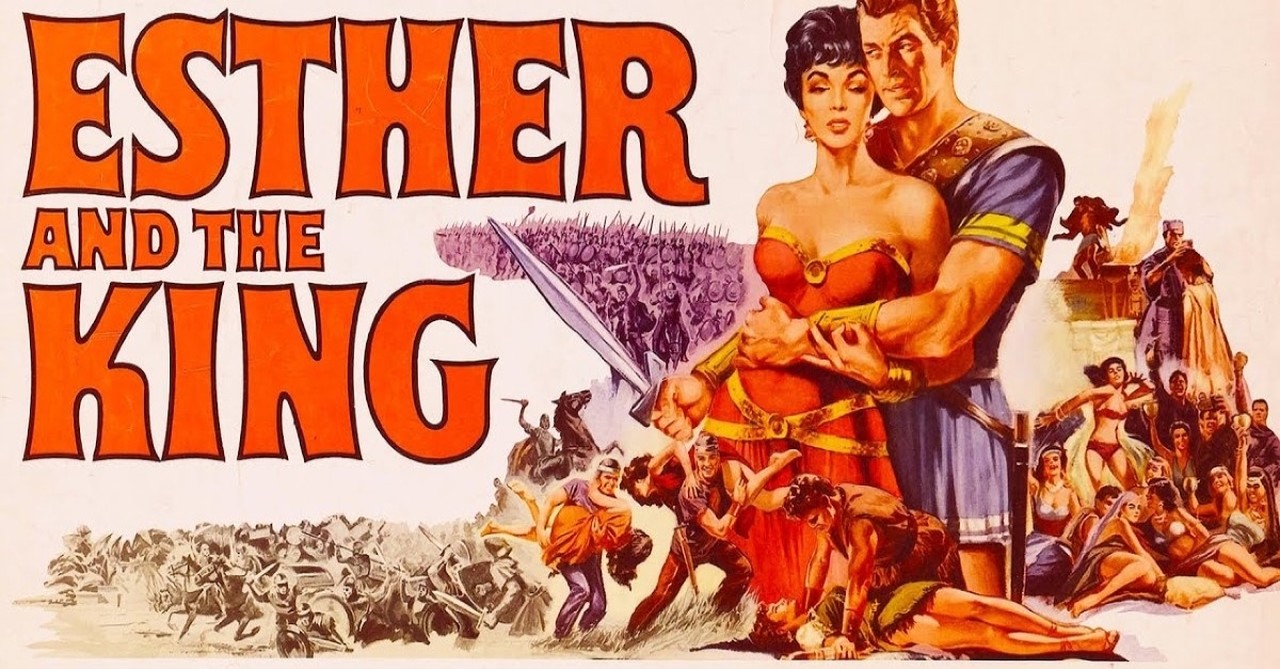
1. Esther and the King (1960)
SLIDE 1 OF 6
More Biblical fiction than Biblical epic, Esther and the King makes more than the usual additions to the story. The story emphasizes Ahasuerus as a warrior, more interested in building his empire than in his marriage. At one point, he asks Haman about a certain upstart named Alexander he plans to crush. There’s also a lot of intentionally over-the-top melodrama. Haman is portrayed as a womanizer who plans for his mistress to become the next queen. When his henchman kills Haman’s mistress by mistake, Haman flogs him yelling, “Idiot! Monster of civility!” Ahasuerus sees Esther for the first when he’s walking shirtless back to his rooms after some combat training and finds rebellious guards trying to kidnap some of the maidens. He quickly dispatches the guards, looks at Esther and walks off. There’s also some overdone sexuality in the movie’s first half, as belly dancers perform at Ahaseuris’ party and Queen Vashti does a daring dance to try and regain his affections.
These additions make the movie definitely PG-13 and more about camp humor and romance than about Esther saving her people. However, Esther is portrayed as a kind, smart woman learning to navigate a world where everything has wheels within wheels. The adventure and sexual elements are deliberately overdone but fit the subject. The story of Esther is about having faith in God. However, it’s also a Bible story about elaborate banquets, a king acquiring a crowd of concubines, and backstabbings piled upon backstabbings. Esther and the Queen may not capture the story accurately, but it perfectly captures its romance, decadence, and intrigue. As Matthew Page observes in 100 Bible Films, it’s also surprisingly feminist for the time (one of the first Bible epics not to include a man’s name in the title).
Further Reading: Most Popular Bible Verses from the Book of Esther
Photo Credit: Twentieth-Century Fox
2. Queen Esther (1948)
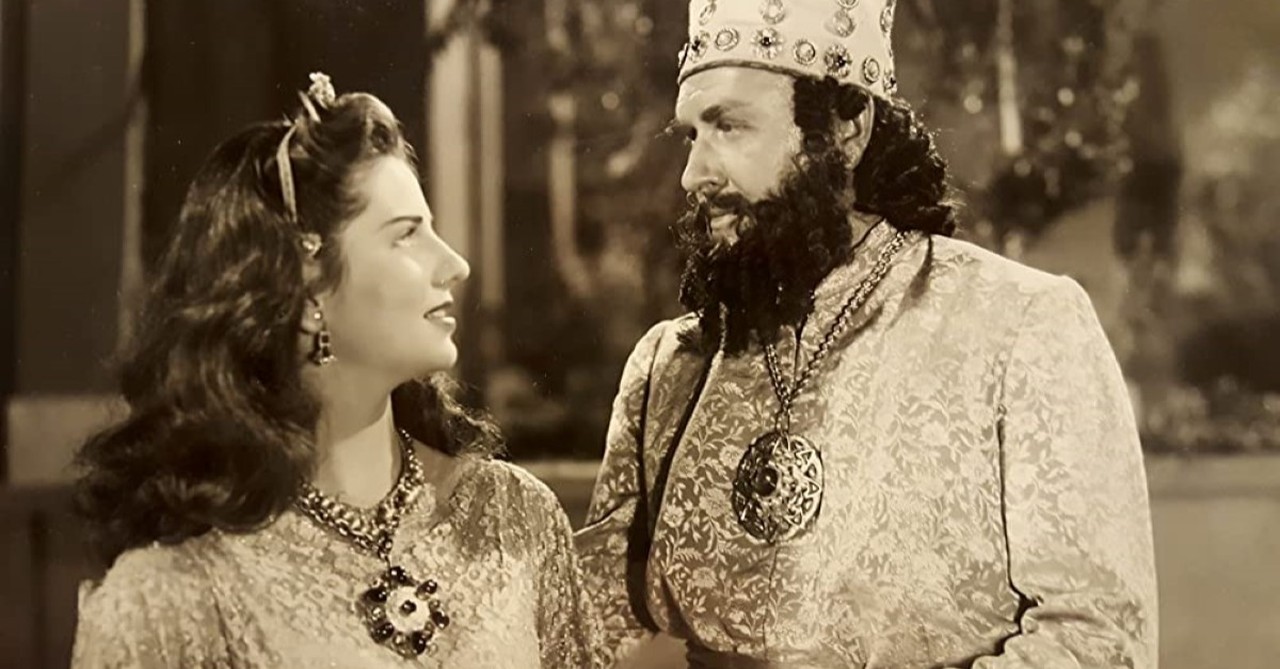
2. Queen Esther (1948)
SLIDE 2 OF 6
Rating: Not Rated
A lower-budget effort released by Cathedral Films, which produced various movies based on Bible stories, Queen Esther follows the biblical text more closely than big-budget epics like Esther and the King. Its smaller resources mean it's not as visually impressive, but it tells the story well. In fact, as Matthew Page of Bible Films Blog observes, Queen Esther finds an interesting way to show what makes this Bible story topical. Instead of starting with the king banishing Queen Vashti and hosting a beauty contest, it begins with a modern-day Jewish man reading the story to his grandchildren. The opening reminds the audience (in 1948, just three years after the Holocaust ended) that foreign powers trying to exterminate the Jews is not new. Numerous times, the Jewish people have been a few inches from extinction, and numerous times God has saved them. The fact that Esther describes the Jews nearly being wiped out a few generations after being exiled (many of them killed when Jerusalem fell, the survivors removed to a foreign land) underlines the horror at the heart of this story. A solid example of how Bible movies are often just as much about the time they were made (working in subtext about recent events) as about the Bible stories they adapt.
Photo Credit: Cathedral Films via IMDb
3. VeggieTales: Esther, The Girl Who Became Queen (2000)
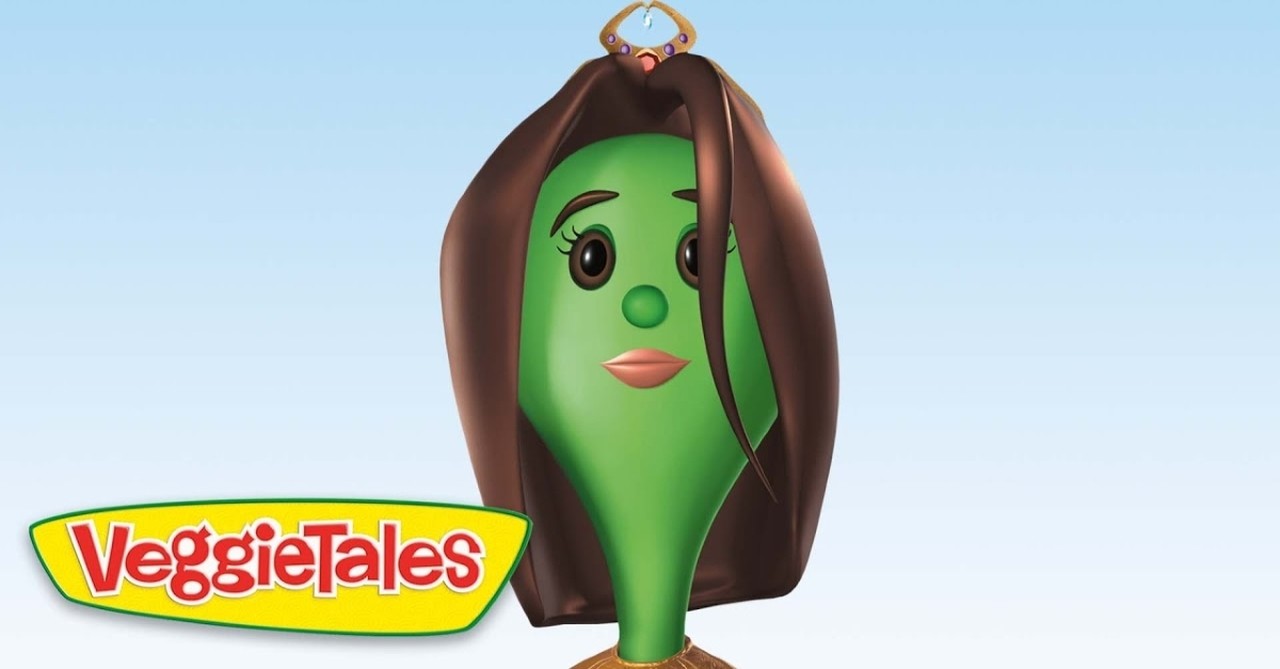
3. VeggieTales: Esther, The Girl Who Became Queen (2000)
SLIDE 3 OF 6
VeggieTales covered most of the famous Bible stories at some point during their original series. Esther, the Girl Who Became Queen feels a bit different from the other episodes because it’s not one of the usual VeggieTales characters acting out the role. Here, it’s an original character playing Esther, with the usual cast (Pa Grape, Mr. Nezzar the Zucchini, Larry the Cucumber, Mr. Lunt the Latin Gourd) as the supporting roles. As usually happens in VeggieTales videos, the story’s scarier elements get downplayed—the king’s wife gets sent away for not agreeing to make him a sandwich, and Esther’s family is threatened with banishment instead of genocide. Even the assassination plot against the king gets handled in a funny way (it involves a falling piano). The selection of a replacement queen happens in a talent show reminiscent of The X Factor.
While all these changes make Esther’s story palatable for kids, the movie refuses to take the usual next step and turn Esther’s story into a romance. Here, it’s clear that she never wanted to be queen. The movie doesn’t color outside the lines and imagine her falling in love with Ahaseuris after their marriage. When the time comes for Esther to intervene for her people, she has no idea of how to be her people’s savior. Her story is about learning to trust where God has placed her and thrive in the surprising role she has been given. By refusing not to make Esther’s story too cute or romantic, this VeggieTales episode highlights how Esther’s story inspires precisely because it doesn’t fit the usual inspirational tropes.
Further Reading: Who Was Esther in the Bible and Why Was She So Important?
Photo Credit: Big Idea Entertainment
4. The Bible Collection: Esther (1999)
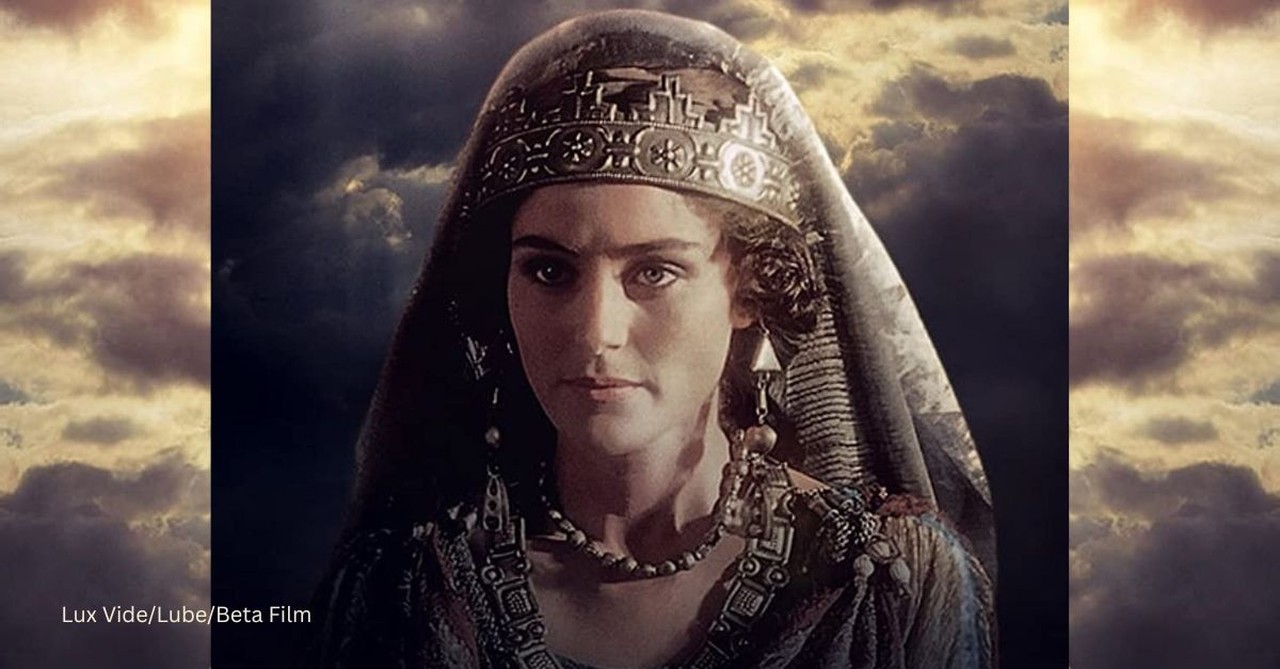
4. The Bible Collection: Esther (1999)
SLIDE 4 OF 6
This 90-minute TV movie (released as part of The Bible Collection in the 1990s and early 2000s) provides a more balanced take on Esther than other costume dramas. There’s still some pomp and circumstance, but it fits the story and never becomes overwrought. The script also injects some humor: the scene changes from Haman discussing how to honor a man to Mordecai being paraded through the city… with Haman leading the horse. The biggest changes to the story are just minor characters who help explain the displaced Jewish context. A devout man named Ezra appears throughout, talking with Mordecai about the need to get their people back to Jerusalem one day. The film ends with Ezra taking a group of Jews back to rebuild the holy city, implying he will be the Ezra who writes a book of the Bible.
Rather than ignoring the story’s more mature elements (maidens taken for the king’s harem, Esther becoming the king’s wife though she doesn’t know him), the movie references them without much detail. When Esther asks the eunuch in charge of Ahaseuris’s harem to be a kind man to one of the grieving maidens, he says, “there are no men here.” When Esther is with the king for the first time, they lie on the bed, and the scene fades to the next morning. The ending further softens the mature elements by showing Ahaseuris humbler, asking Esther to be an equal ruler. While this ending may not be historically plausible, it only hints at romance, unlike some Esther movies that make the entire plot into an elaborate romance.
As live-action Esther movies go, this may be the best one.
Further Reading: 6 Powerful Life Lessons from the Book of Esther
Photo Credit: Lux Vide/Lube/Quinta
5. Buck Denver Asks What’s In the Bible? Volume 7 (2012)
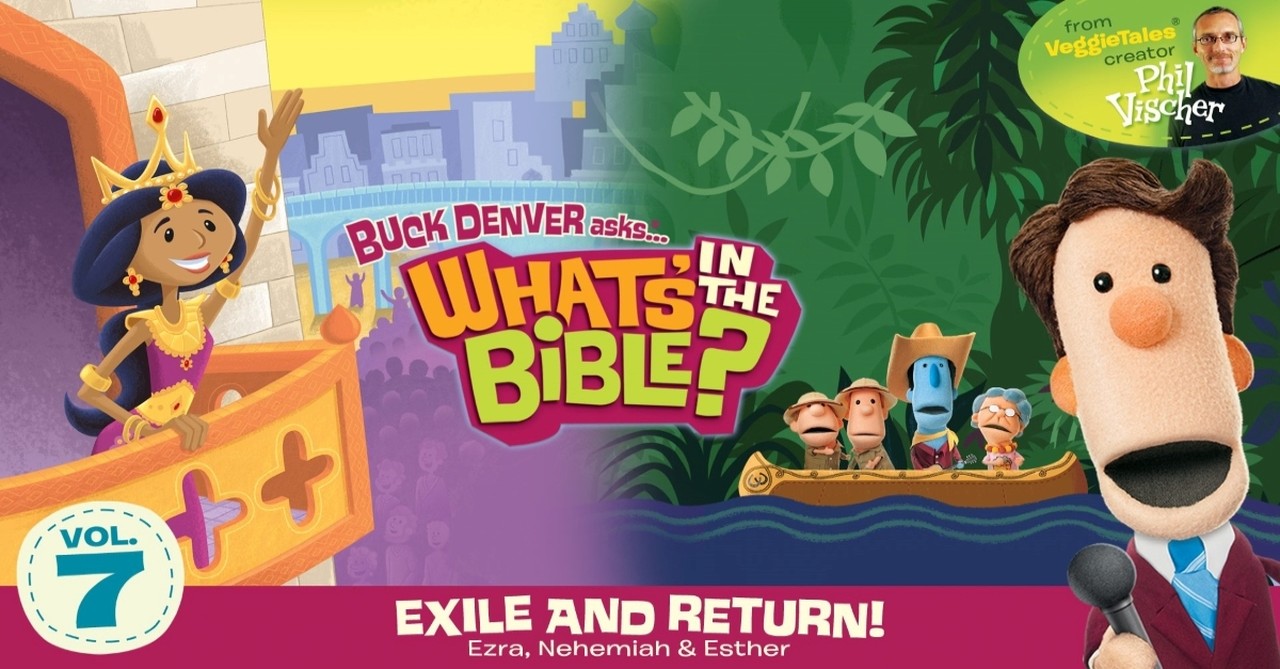
5. Buck Denver Asks What’s In the Bible? Volume 7 (2012)
SLIDE 5 OF 6
Buck Denver Asks What’s In the Bible? was Phil Vischer’s next major project after VeggieTales, and has some of the same humor. The difference is that here Vischer becomes a character in the series. Each episode consists of Vischer interacting with puppet characters who learn about a section of the Bible. Buck Denver is a newscaster who asks questions about the Bible. Sunday School Lady gives the answers (including historical context from other sources). Various side characters ask whatever questions Denver didn’t think of, or they act out the Bible stories as short sketches. Other characters sing songs about the Bible stories. Every section wraps up with Vischer explaining the story’s big moral. The characters talking directly to the camera make this more informational than VeggieTales (less emphasis on dramatizing Bible stories, more on covering each story’s context). At the same time, the puppets interacting with Vischer and each other create some fun “behind the scenes” humor not unlike The Muppet Show.
Volume 7 of the series covers three books of the Bible: Ezra, Nehemiah, and Esther. Characters learn about these three books chart a particular time in Israel’s history: their exile under the Babylonian Empire and the subsequent Persian Empire. Since these books fit together to cover that period (and the Jews returning to Jerusalem), hearing their stories together creates a fuller picture of why Esther was in Persia. The characters also fill in some surprising details about Ahaseuris, like his history of rash decisions, temper tantrums, and other occasions when he followed poor advice.
Halfway between Sunday School lesson and Saturday morning cartoon, and always fun.
Further Reading: 5 Reasons All Christians Should Read Queen Esther's Story
Photo Credit: What’s in the Bible?
6. Sight & Sound: Queen Esther (2020)

6. Sight & Sound: Queen Esther (2020)
SLIDE 6 OF 6
Recommended for Kids: Yes
Given that Esther’s story has mature elements and Sight & Sound Theaters’ specialty is musicals that the whole family can see, this could have been a strange production. In fact, it works great. The lavish court scenes are fun and the songs catchy, even more fun than the campiness of Esther and the King. The harem and wedding are glossed over, made palatable by portraying Ahaseuris as a romantic infatuated with Esther even though he doesn’t spend much time with her. Like The Bible Collection: Esther, he comes across as a child who slowly learns maturity from his wife, but as the characters remind us, Ahasuerus was a reckless man. He was the king who whipped the sea 300 times because its weather delayed his troops.
More than anything else, this Esther movie avoids the squeamish details by presenting a dual narrative. Esther is the main character, and her story is handled well, but the plot pays just as much attention to Mordecai. Here, he is portrayed as a devout man who can’t stand his niece marrying a Gentile but prays for her. Ezra, portrayed as a long-suffering scribe who gives Mordecai inside information, links his story to Esther once she enters the palace. When Haman enters the scene, Mordecai reminds his brethren of some history. Haman is an Agagite—from a Canaanite people that King Saul was supposed to exterminate. As Mordecai meets Haman and refuses to bow, he sings about being a descendant of Saul, coming face to face with a descendant of Agag. Later, as Haman chats with the king before presenting his extermination plan, Ahaseuris observes they are in the hall of records. Haman comments, “it’s important to remember our history.”
Overall, this Esther film may give the best mixture of melodrama and morals. It’s full of pomp, but the pomp never overpowers the sense this is a story about trusting God.
Further Reading: What Can We Learn from Esther?
Photo Credit: Sight & Sound Theatres

Originally published March 23, 2023.









